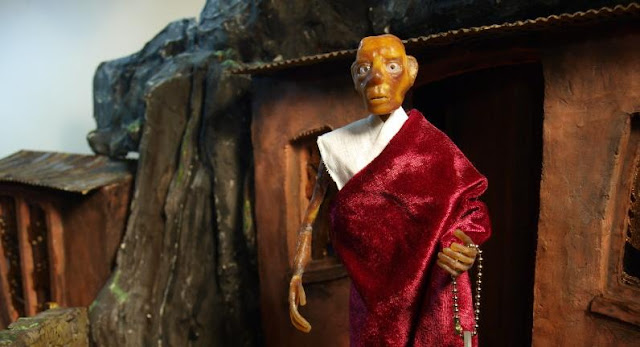 |
| Film making: It's mostly just sitting about |
In the real world, I've seen directors get wound up in the excitement of actually making a film - it is terribly thrilling, despite the stereotype about the prevalence of sitting about waiting - but I've also seen the results suffer from that.
So I worry about it. It's happened to me before: Working on another short, I completely gave up on anybody ever wanting to see the damned thing. I didn't know what I wanted to say any more, couldn't work out if the script was developed enough to make sense or if it was painfully wooden and over exposed. However, the resulting product, though imperfect was very well received, so what do I know?
 |
| Margins are for scribbling in! |
If I'm honest, I rather like the insecurity. I'm confident that I've done the groundwork, tilled the metaphorical earth and sown the proverbial beans. Now, as director, I'll have to sit back and wait for the crop to grow. I can get on with the technical processes because they're important at this stage.
In stop motion, the puppets, the props and the costumes all seem to make decisions too and there's myriad other influences, so I'll never have exactly the shots I've so meticulously storyboarded. (I'm being deliberately ironic. Master of the storyboard M. Night Shyamalan has little to fear from me: see picture)
The final word on letting go is offered to renaissance artist
Michelangelo who always maintained that his sculptures had always existed. That his job was simply to clear away the bits of stone that weren't needed. I'm all about preparation - no, really, I am - I'm just not interested in making a film that I've already seen.






